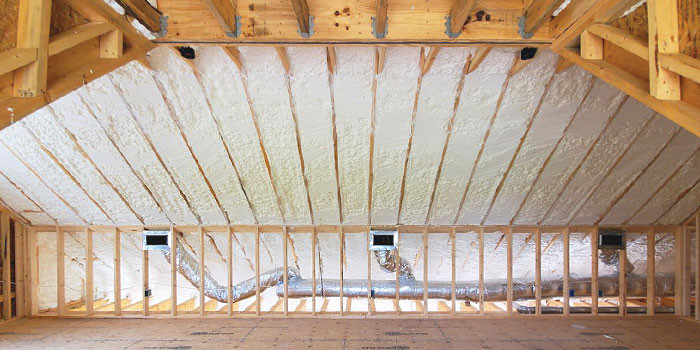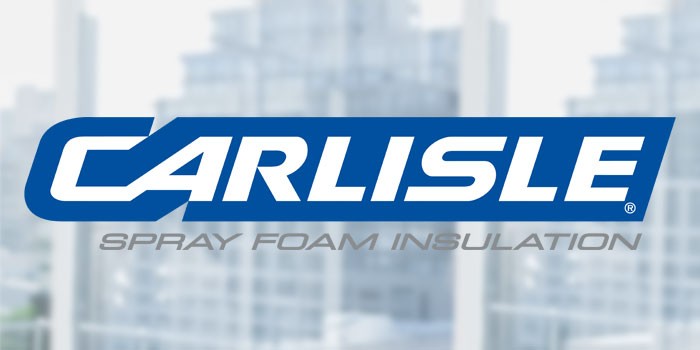Floating Opportunities


We tend to think of ourselves and our businesses in terms of what we already do most often—I’m an insulation guy, I’m an air-sealing guy, I’m an energy rater, or I’m a foamer. Make sure that as you go about your day, you keep an eye out for opportunities. What additional types of projects can you do with your existing set-up and your existing equipment?
One of the specialty areas that may be interesting for you is flotation foam. Flotation foam is a type of closed-cell foam, typically a slower reacting pour foam with a very low rate of water absorption. This lightweight material works very well as a flotation foam in building and/or repairing boats, barges, docks, canoes, kayaks, pontoons, filling voids, filling under decks, and practically any other flotation or insulation application. Additionally, The U.S. Coast Guard-approved materials also meet other criteria as well, including the ability to withstand the combined effects of petroleum products like gasoline, bilge solvents, and fresh and salt water.
Wood floats, right? Most of us know that, and as a result, a wood boat by itself will not sink. But not all boats are made of wood. Fiberglass skinned boats are very popular, especially in the smaller boat category, and if punctured below the waterline, it will head for the bottom unless some design mechanism prevents this. The simple reason is that the density of the fiberglass skin is higher than the density of water, meaning that the fiberglass weighs more per volume than an equivalent volume of water; so, the fiberglass will sink in water. On the other hand, the wood used in the boat building industry has a lower density than water, so it weighs less than the same volume of water, meaning that it will float. So, we can use flotation materials, like pour-in-place flotation foam to protect a fiberglass boat and prevent it from sinking if hull integrity is lost. »
So, how much foam does a boat need? It depends.
First and foremost, flotation should be focused near higher weight items with negative buoyancy, such as engines and batteries. Also, salt water and fresh water have different densities, so flotation foam can support a different amount of weight in each. Salt water weighs about 64 pounds per cubic foot and fresh water about 62.5 pounds per cubic foot; and to determine the net value for flotation purposes, the weight of the foam per cubic foot must be deducted from the weight of the water per cubic foot. For example, if the foam being used weighs two and a half pounds per cubic foot, this will leave a net flotation value of 61.5 pounds per cubic foot of installed foam if the boat is used in salt water, and a net flotation value of 60 pounds per cubic foot of installed foam
if the boat is used in fresh water.
On a final note, when attempting these designs for flotation purposes, the foam should be distributed as evenly as possible, so the boat will float nearly level if holed. Also, make sure to consult the foam product manufacturer’s guidelines, working procedures, and recommendations for their flotation foams.
There are some unique opportunities out there, if you know what you are looking for, and flotation foam can be one of those opportunities. These flotation materials are processed through the same equipment you already use, and with a little learning curve on how these materials expand, the processing methods and application techniques, they could easily offer additional revenue for your business. •
About the Author Robert Naini has a Bachelor’s of Science in Mechanical Engineering and an MBA from the University of Texas in Arlington. With more than a decade of experience on the cutting edge of spray foam insulation, he has helped hundreds of owners and managers grow their business with a unique knowledge base including spray foam sales and marketing, employee and applicator training, building science awareness and building code expertise. Spray Foam Advisor offers web-based training and education, with videos, articles, blogs and more, to help solve problems for spray foam professionals and the construction industry. | www.sprayfoamadvisor.comhttp://www.sprayfoamadvisor.com/
*Spray Foam Magazine does not take editorial positions on particular issues; individual contributions to the magazine express the opinions of discrete authors unless explicitly labeled or otherwise stated. The inclusion of a particular piece in the magazine does not mean that individual staff members or editors concur with the editorial positions represented therein.
Disqus website name not provided.









































